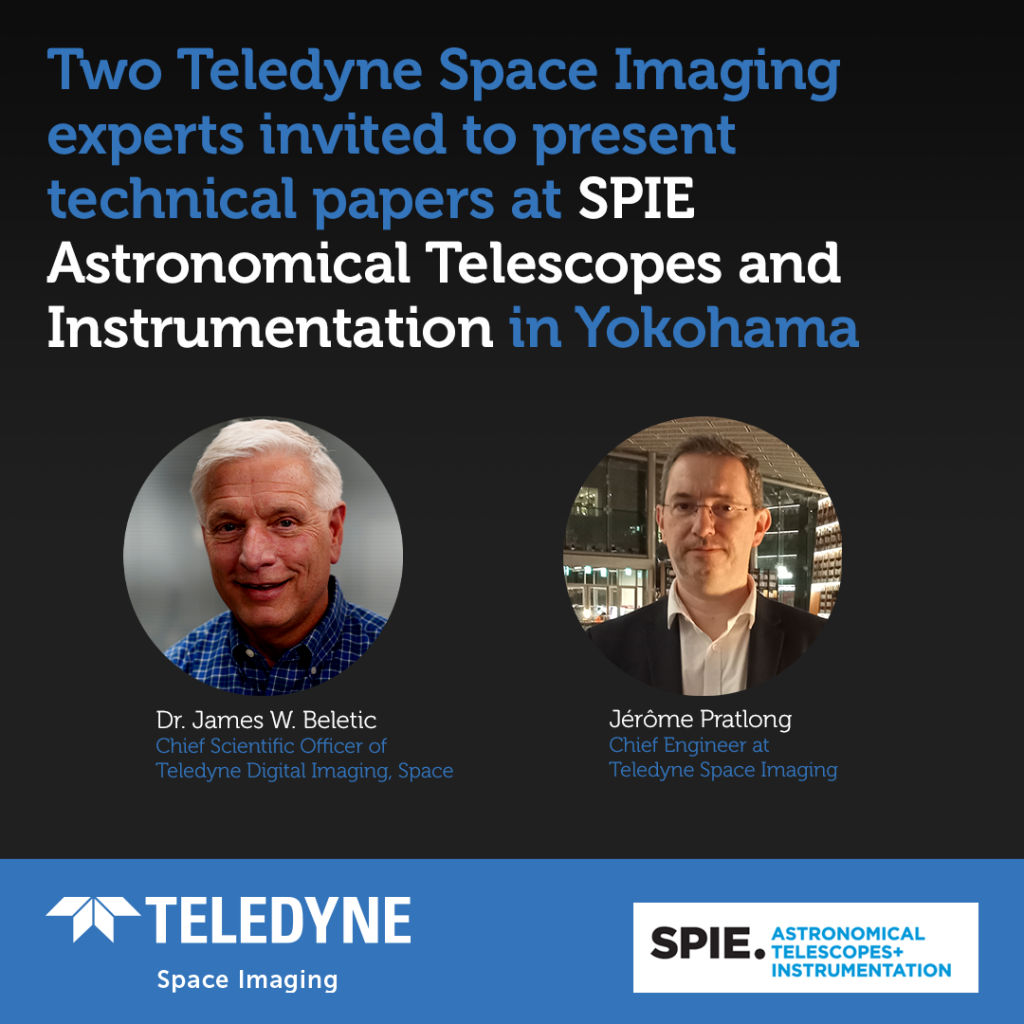Two experts from advanced technology manufacturer, Teledyne Space Imaging have been invited to present technical papers at the forthcoming SPIE Astro conference, taking place in Yokohama, Japan from 16 to 21 June 2024.
Dr James Beletic, Chief Scientific Officer, will get the conference started by presenting his paper on Teledyne Space Imaging’s recent contributions to astronomy, Earth imaging and planetary science on 16 June at 8.30am (Japan Standard Time) in Room G213, North – 2F. The presentation will provide details of the most recent astronomy missions and applications delivered and supported by Teledyne’s Focal Plane Arrays. Projects include JWST, Euclid Dark Universe Mission, Roman Space Telescope and ESO ELT ground-based observatories, among others.
Then, on 18 June at 10.30am (Japan Standard Time), Jérôme Pratlong, CMOS Chief Engineer and Team Leader, will deliver a second paper about innovations in imaging technology at Teledyne e2v, designed to support future visible, NIUR, UV and X-ray applications. This presentation will also take place in Room G213, North – 2F and will cover Teledyne’s ongoing investment in CCD and CMOS sensors for ground and space-based astronomy innovations. Developments in this area include electro-optical performances, QE from ultraviolet to near infrared and results obtained at cryogenic temperature.
Dr James Beletic has built up more than 40 years’ experience in instrumentation, specialising in visible and infrared image sensors. He has held several important scientific positions and leadership roles at a number of major research centres and astronomical observatories before taking up his current position at Teledyne Space Imaging.
Jérôme Pratlong brings 16 years’ experience designing detectors for space and astronomy applications to the table. He looks after Teledyne’s R&D innovation for visible and infrared detectors.
Teledyne produces sophisticated, highly reliable electronics, imaging and sensor systems for operation in the growing global space economy. Besides delivering these two presentations, the team will also showcase its customised range of CMOS sensors and infrared detectors during the conference. The team will also show the demonstrator model of its Lightning Mapper prototype, developed as part of a Phase-A study funded by NASA.
Teledyne Space imaging experts will also be on hand during the exhibition to highlight Teledyne Space Imaging’s range of best-in-class infrared and visible imaging focal plane arrays (FPAs) that are used in astronomy, Earth observation and other scientific and defence applications. These include the GeoSnap family of highly flexible digital devices, currently operational in several space-based, Earth observation applications, as well as the HAWAII family of extremely low power, high-sensitivity FPAs. HAWAII detector arrays are used in most of the world’s leading astronomical telescopes, both on the ground and in space.
For Ground astronomy applications, Teledyne has its COSMOS camera with 66, 42, and 10 megapixels sensors which enables advancements in astronomy, and opens paths for further commercialisation of large area CMOS by other industries. COSMOS provides a powerful imaging solution that both drives innovation and expands exploration of our universe.
SPIE Astronomical Telescopes and Instrumentation conference is the world-leading event for astronomic engineering. Taking place annually, it brings together ground-based, airborne and space-based experts to innovations in telescopes, imaging and supporting instrumentation. Delegates gather to share insights, present research and discuss opportunities for co-operative working. A programme of technical conferences and events covers a vast range of topics over the six days of then event, while an accompanying exhibition provides delegates with the chance to connect with leading companies and organisations operating across the global sector.

Manufacturing & Engineering Magazine | The Home of Manufacturing Industry News









